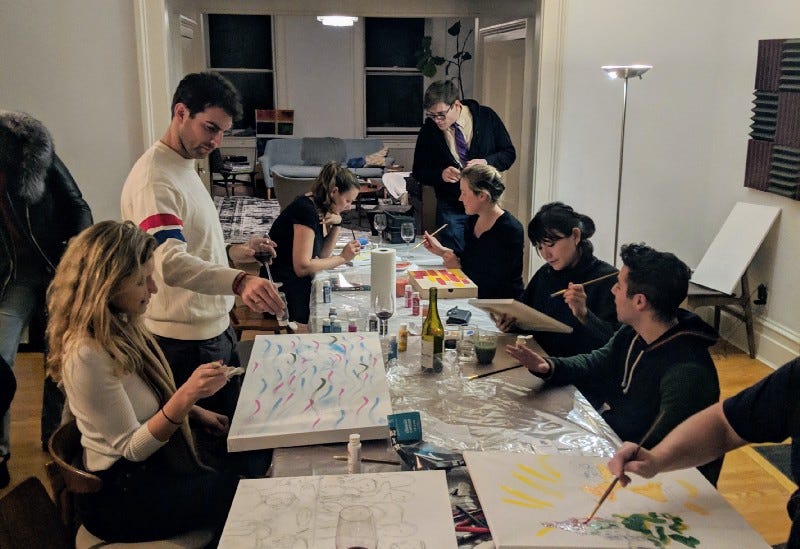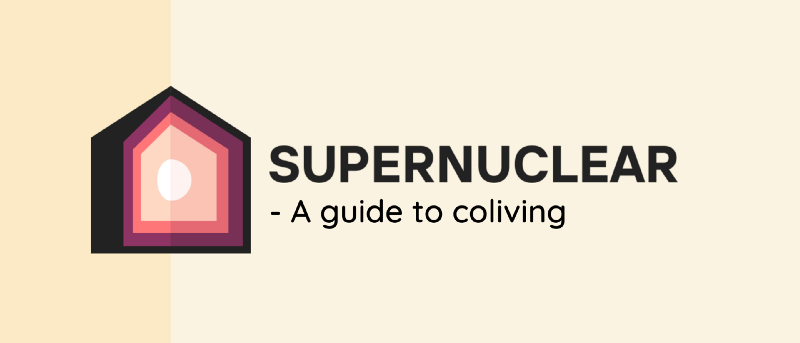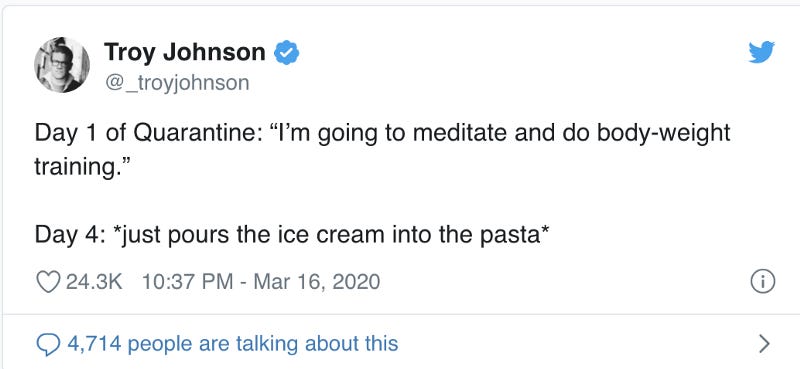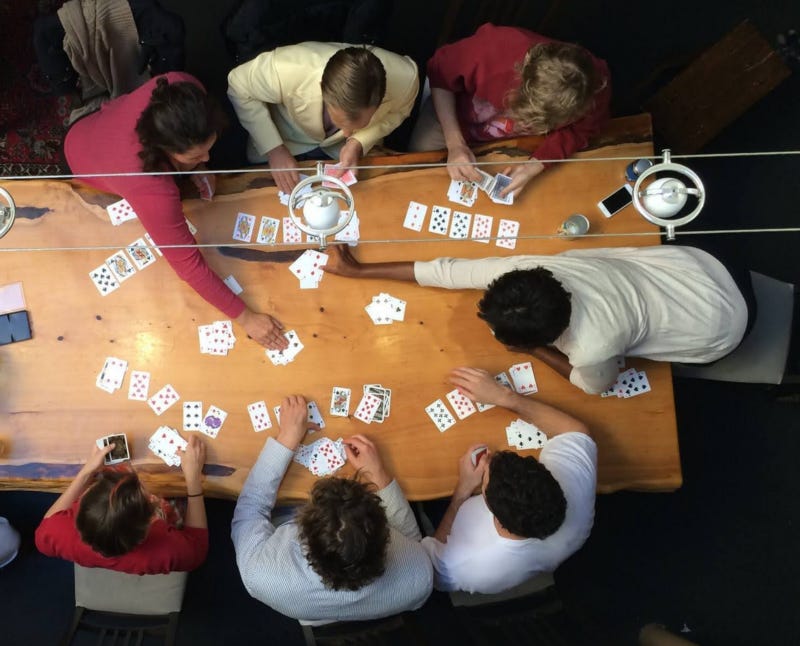Earlier this year, thanks to COVID-19, I had an apartment to myself for the first time in a decade.
It was amazing. There were zero demands on my personal time. I could leave dishes in the sink without guilt. I could watch the entire Tiger King series in 24 hours while relishing a pint of ice cream.
I felt a deep calm. I started sleeping 11 or 12 hours a day.
After two weeks, I’d done no work and my apartment was infested with ants. Leaving dirty dishes in the sink in the tropics is a bad, bad idea.
At some point it occurred to me that sleeping long hours coupled with lack of motivation might be better described as depression.
And I was pretty sure my living situation had something to do with it.
When I was living with people, there was an incentive to cook something healthy every day knowing it would be enjoyed by more than just me. I looked forward to hanging out in the living room and trading war stories with roommates who were also building companies. And there was always a chance of something unexpected and delightful happening. One Saturday night, I came home after a mediocre party to find my roommates making plaster casts of their faces and turning them into ghoulish masks. Were we making great art? No. Was doing something creative a better use of my time than Netflixing myself to sleep? No doubt.

Many studies have shown that living alone leads to a higher prevalence of ‘common mental disorders’ (CMDs) such as depression, anxiety, and substance abuse. One study that tracked over 20,000 people over 14 years in the UK found that those who live alone were nearly twice as likely to develop a CMD as those who live with others.
I’ve enjoyed living alone. It’s easy. I also enjoy pints of Ben & Jerry’s. They’re delicious.
Most people will agree that ice cream is bad for you, but not a lot of people talk about the health risks of living alone. Instead, living alone is an achievement that’s celebrated. It’s what you do when you’ve ‘made it’. People who live with roommates in adulthood must be too poor to have their own place, or else they’re just a little weird.
So let me introduce myself, a total weirdo.
On the surface I’m a conventional yuppie millennial. I founded a tech company. My hobbies include hiking, reading, and I just did my first half Ironman. I spend too much time on Instagram. I wear athleisure.
But I’ve also spent the last five years living in community homes that ranged in size from five to sixteen people. I started one, Gramercy House, in NYC, and spent time in several others in the Bay Area, Berlin, and Puerto Rico, where I live now.
I’ve had some of my happiest moments — and worked through some gnarly lows — with people I’ve come to regard as family. There are simple pleasures, like coming off a red eye flight to a home cooked breakfast (Das Konsulat, Berlin). There are collisions you don’t expect, like when the guest in the room next to yours happens to be Liberia’s Minister of Education (the Embassy, San Francisco). And there are so, so many things that money can’t buy, like a group of people you’ve just met coming together to nurse you back to health after a horrible bike accident leaves you temporarily with no short term memory (the Icebreaker, San Francisco).
I’m sure I’m a better person because of coliving. I don’t think it’s for everyone, but I do think it is something that would make sense for many more people than are practicing it right now.
Which is why I’m teaming up with Phil Levin to write this guide. We want to distill the years of hard work we’ve put into figuring out what makes communities function into a resource for anyone who’s interested in coliving.
If you’re just beginning to explore the concept, we’ll show case studies of what’s gone right (and can go wrong).
If you’re already living with friends, we’ll share best practices for managing your finances, collaborative decision making, and making sure the dishes get done.
And if you’re looking to take the big leap and purchase property with a group, we’ll help you figure out how to pitch your unconventional structure to banks and protect yourself legally.
As we navigate the current health crisis, we need to figure out how to make better use of our resources and help each other thrive. Choosing to live with others could be one of the simplest and most effective ways to do that. Chances are that it’ll be pretty fun as well.
So I hope you’ll come along with us as we dive into what it means to go supernuclear: to build a life surrounded by more than your immediate family.
Sign up here to get episodes of our guide to coliving.
No spam, just the good stuff.
And you can find the directory of the articles we’ve written here and those we plan to write here.







